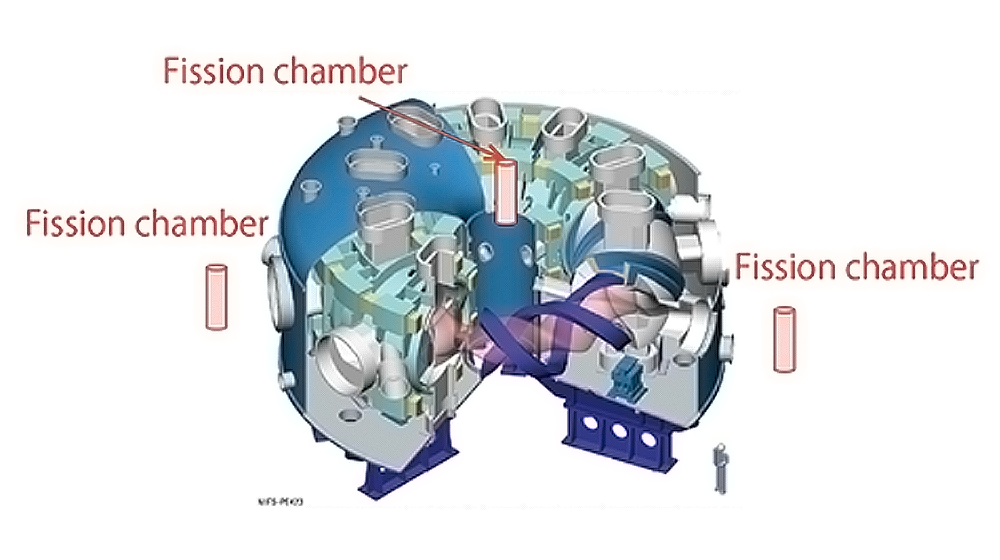Development of standard neutron flux monitor
for fusion research
We have developed a neutron flux monitor equipped with the latest digital circuit technology to accurately measure and control neutrons generated in deuterium plasma experiments at the Large Helical Device (LHD). The monitor has a wide measurement range, fast response time, and high immunity to electromagnetic noise and is in stable operation at LHD. It is expected to play an active role as a standard control and measurement device in fusion plasma experiments such as JT-60SA and ITER.

The Large Helical Device (LHD) has been conducting plasma discharges using deuterium gas, so-called deuterium experiments, since March 2017 to improve plasma performance. In the deuterium experiment, a small number of neutrons are generated by the deuterium-deuterium nuclear fusion reaction. To manage the number of neutrons produced, the LHD is equipped with three neutron monitors.
In this paper, we report on the development of the neutron flux monitor and its performance, which was jointly developed by the National Institute for Fusion Science and Toshiba Energy Systems & Solutions Corporation for the deuterium experiment in the LHD. In Japan a neutron flux monitor had been developed and used in the JT-60 device of the Japan Atomic Energy Agency (currently the National Institutes for Quantum Science and Technology). However, the analog circuit components used in the monitor are no longer procurable, and it has become impossible to manufacture the same product. Therefore, we conducted research and development to realize a neutron flux monitor for LHD deuterium experiments with a wide measurement range, fast time response, and high electromagnetic noise immunity by making full use of the latest digital circuit technology.
The digital circuit was tested with the cooperation of Prof. Misawa of Kyoto University, and a measurement range of more than nine digits was obtained. As well as developing this measurement system, we gained the ability to acquire neutron generation rate data for every 1/2000th of a second, and the ability to suppress even a small amount of electromagnetic noise generated by the plasma discharge. After starting the deuterium experiment, the neutron flux monitor showed a very stable operation. Furthermore, the use of this system has greatly advanced the research on energetic particles in the LHD, and many excellent research results have been produced. In addition, its excellent performance and stability have been highly evaluated, and it is currently being considered for use with the JT-60SA of the National Institutes for Quantum Science and Technology and ITER. It is expected to play an active role as a standard control and measurement device in future fusion plasma experiments.
The results of this research were published in Plasma and Fusion Research, an online journal by the Japan Society of Plasma Science and Nuclear Fusion Research on February 26, 2021, and were selected for the 20th Industrial Technology Award of the Japan Society of Plasma Science and Nuclear Fusion Research.
